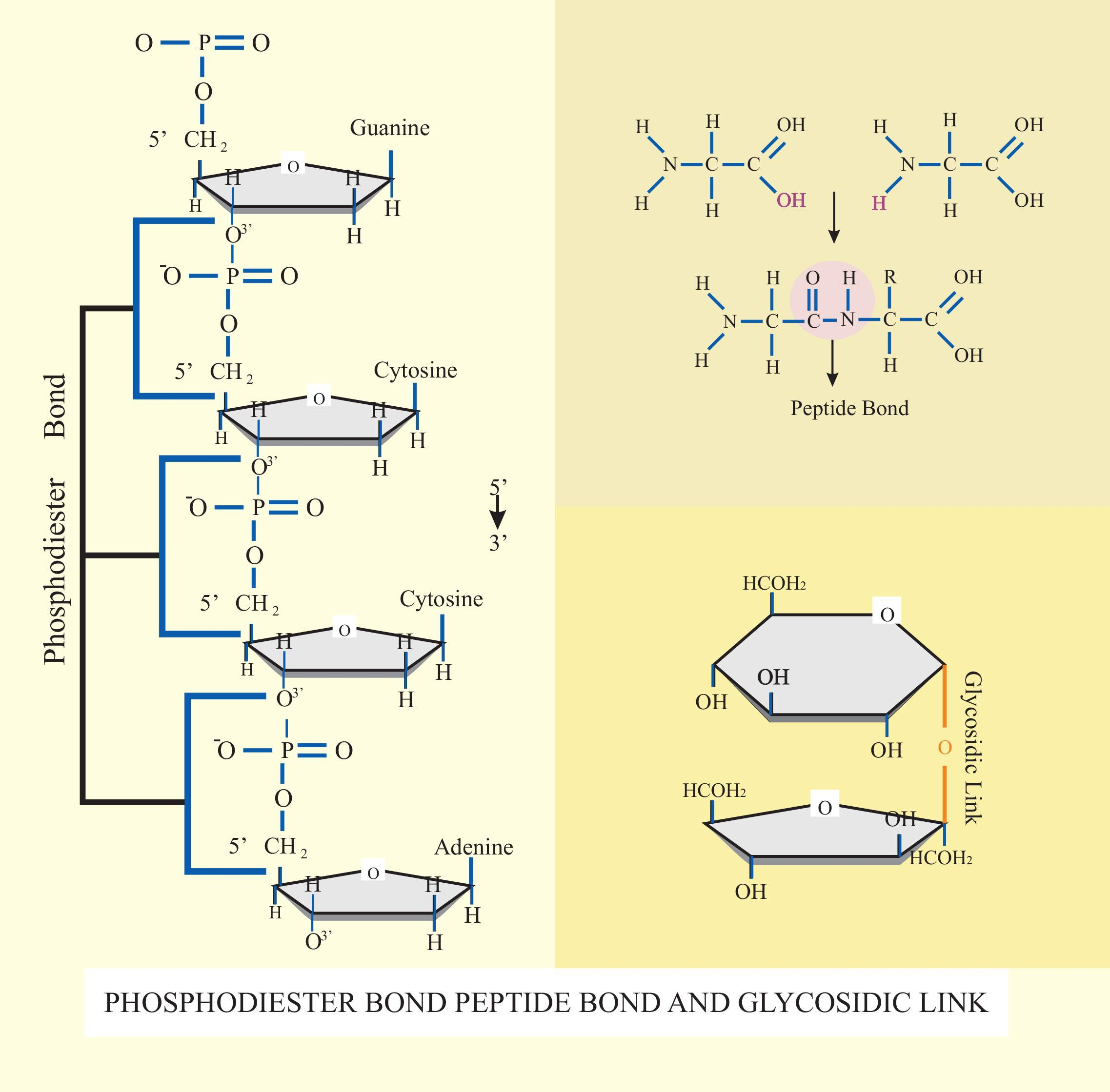
Illustrate a glycosidic, peptide, and phosphodiester bond.
Answer
478.2k+ views
Hint: All these bonds are present between organic compounds and they are necessary for forming all the basic components which support life for all organisms, from single-celled bacteria to multicellular human beings.
Complete answer:
Glycosidic bond: The bond present between the hydroxyl group of certain compounds and groups of saccharide is known as a glycosidic bond.
-These bonds are present in certain inorganic compounds such as the sulfuric acid and any substance which has a glycosidic bond is known as a glycoside.
Peptide bond: Peptide bond is also known as the eupeptide bond which bounds among two peptides or proteins.
-A dipeptide formed through a peptide bond and two amino acids are a type of condensation reaction.
-In organisms, the organisms provide ATP for the formation of a peptide bond which demands energy.
-Phosphodiester bond: Phosphodiester bond is universal to all life forms present on earth because of the backbone of both DNA and RNA.
-By alkaline hydrolysis, the phosphodiester bond inside two ribonucleotides can be broken but deoxyribonucleotides have a better stable linkage in these conditions. All three bonds are found in all the organic compounds present in human beings.

Note: -Phosphodiesterase is an enzyme that catalyzes the hydrolysis of the phosphodiester bond which plays an important role in repairing DNA sequences.
-The nitrogen-carbon linkage present in DNA is glycosidic. Damages or aberrations occurring in the generic content can cause severe genetic related diseases and mutations.
-While the replication of DNA occurs there will be damage to the genetic content which is fixed by phosphodiesterase enzyme.
Complete answer:
Glycosidic bond: The bond present between the hydroxyl group of certain compounds and groups of saccharide is known as a glycosidic bond.
-These bonds are present in certain inorganic compounds such as the sulfuric acid and any substance which has a glycosidic bond is known as a glycoside.
Peptide bond: Peptide bond is also known as the eupeptide bond which bounds among two peptides or proteins.
-A dipeptide formed through a peptide bond and two amino acids are a type of condensation reaction.
-In organisms, the organisms provide ATP for the formation of a peptide bond which demands energy.
-Phosphodiester bond: Phosphodiester bond is universal to all life forms present on earth because of the backbone of both DNA and RNA.
-By alkaline hydrolysis, the phosphodiester bond inside two ribonucleotides can be broken but deoxyribonucleotides have a better stable linkage in these conditions. All three bonds are found in all the organic compounds present in human beings.

Note: -Phosphodiesterase is an enzyme that catalyzes the hydrolysis of the phosphodiester bond which plays an important role in repairing DNA sequences.
-The nitrogen-carbon linkage present in DNA is glycosidic. Damages or aberrations occurring in the generic content can cause severe genetic related diseases and mutations.
-While the replication of DNA occurs there will be damage to the genetic content which is fixed by phosphodiesterase enzyme.
Recently Updated Pages
Master Class 12 Economics: Engaging Questions & Answers for Success

Master Class 12 Maths: Engaging Questions & Answers for Success

Master Class 12 Biology: Engaging Questions & Answers for Success

Master Class 12 Physics: Engaging Questions & Answers for Success

Master Class 12 Business Studies: Engaging Questions & Answers for Success

Master Class 12 English: Engaging Questions & Answers for Success

Trending doubts
Draw a labelled sketch of the human eye class 12 physics CBSE

Phenol on treatment with conc HNO3 gives A Picric acid class 12 chemistry CBSE

Differentiate between homogeneous and heterogeneous class 12 chemistry CBSE

Which sugar is called invert sugar Why is it called class 12 chemistry CBSE

a Give chemical tests to distinguish between 1 Propanal class 12 chemistry CBSE

What are the major means of transport Explain each class 12 social science CBSE




